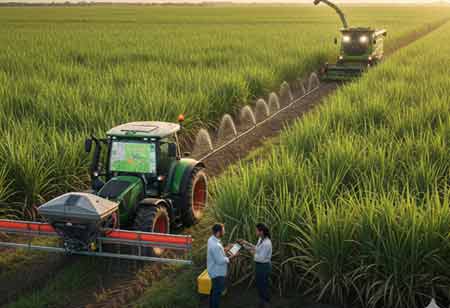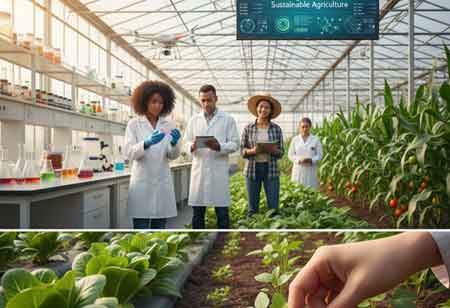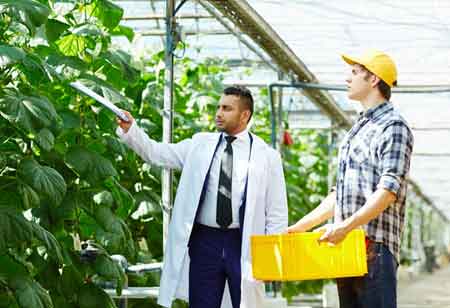Thank you for Subscribing to Agri Business Review Weekly Brief
Managing Agricultural Plastic Pollution for a Greener Future
The integration of plastics in modern agriculture is extensive and diverse. Various synthetic polymer products, such as black polyethylene.

By
Agri Business Review | Saturday, January 06, 2024
Stay ahead of the industry with exclusive feature stories on the top companies, expert insights and the latest news delivered straight to your inbox. Subscribe today.
The utilization of plastics throughout various stages of the agricultural process has demonstrated the potential to enhance productivity. Recent research findings have prompted farmers and advocates to actively advocate for transformative measures in response to these concerns.
FREMONT, CA: The integration of plastics in modern agriculture is extensive and diverse. Various synthetic polymer products, such as black polyethylene mulch film, clear plastic sheeting for hoop houses, and plastic seed trays, irrigation tubes, and fertilizer bags, play crucial roles in enhancing crop yields by up to 60 percent while optimizing water and pesticide usage. However, this widespread use, referred to as plasticulture, presents a range of well-documented challenges.
The extensive presence of plastics in agricultural settings poses a significant threat to soil health and food security. Research indicates that as these materials degrade, they release chemicals that reduce crop productivity, affecting not only the soil but also various components of the food chain, from earthworms to human placentas.
Although agriculture contributes less than three percent of the total 440 million tons of plastic produced annually worldwide, its pervasive use across farming practices, from individual seeds to packaged produce, has embedded plastics deeply within our food supply chain.
Addressing the challenges of feeding a growing global population while reducing dependence on plastics in food production presents a formidable task. Demokritou points out that there are no easy solutions, advocating for a comprehensive approach involving reduced production and consumption, increased recycling, and fostering reuse throughout the supply chain. This effort requires a collective societal battle, involving policymakers, producers, farmers, and consumers.
Plastic pollution has become a global concern, with projections suggesting a tripling of global plastic waste by 2060, predominantly comprising single-use products. These products contribute to substantial greenhouse gas emissions and disproportionately affect disadvantaged communities. Despite these challenges, the convenience and cost-effectiveness of synthetic polymers make them indispensable across various industries, including agriculture, where they account for 80% of the 14 million tons of plastics consumed annually.
In response to these concerns, the United Nations Food and Agriculture Organization (FAO) has called for more sustainable practices in using agricultural plastics, emphasizing the need for a global treaty to address plastic pollution. Plastic films, especially black mulch and greenhouse covers, represent a substantial portion of global plastic use, aiding in extending growing seasons and weed suppression.
Efforts to find greener alternatives like biodegradable plastic mulches (BDMs) have emerged, yet their long-term impact remains uncertain. Additionally, the complexity of these materials and their additives necessitates further study into their environmental and productivity effects.
Despite the challenges, coordinated actions involving diverse stakeholders have shown promise in managing agricultural plastic waste. Initiatives have engaged stakeholders across the supply chain, resulting in effective waste management strategies and increased recycling through incentivized actions and collaboration.
Mitigating the adverse effects of plastics in agriculture requires a concerted effort involving various stakeholders to find innovative, sustainable solutions that safeguard both the environment and human health, as these costs are far more manageable than dealing with future crises resulting from unchecked plastic pollution.
More in News





